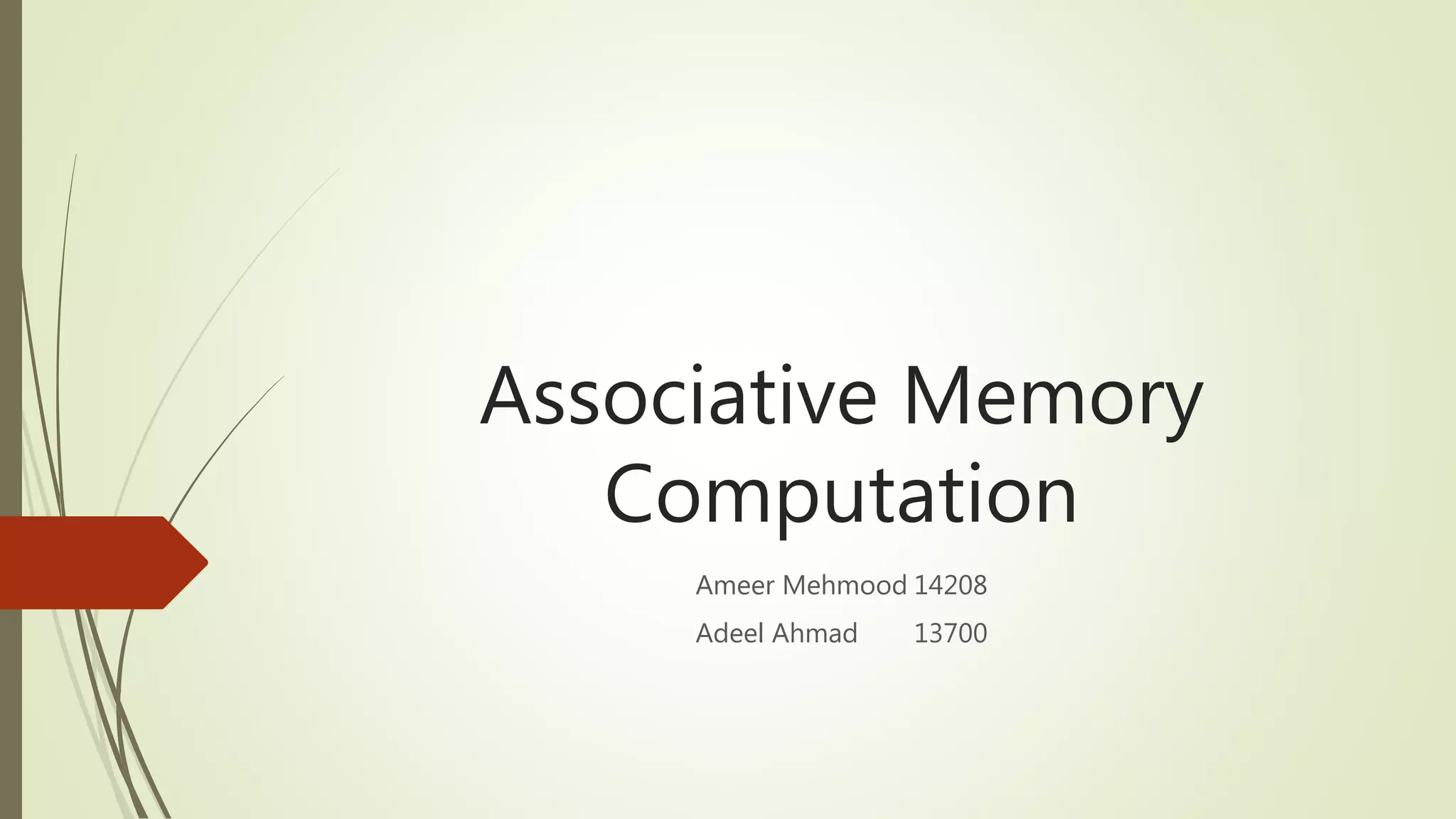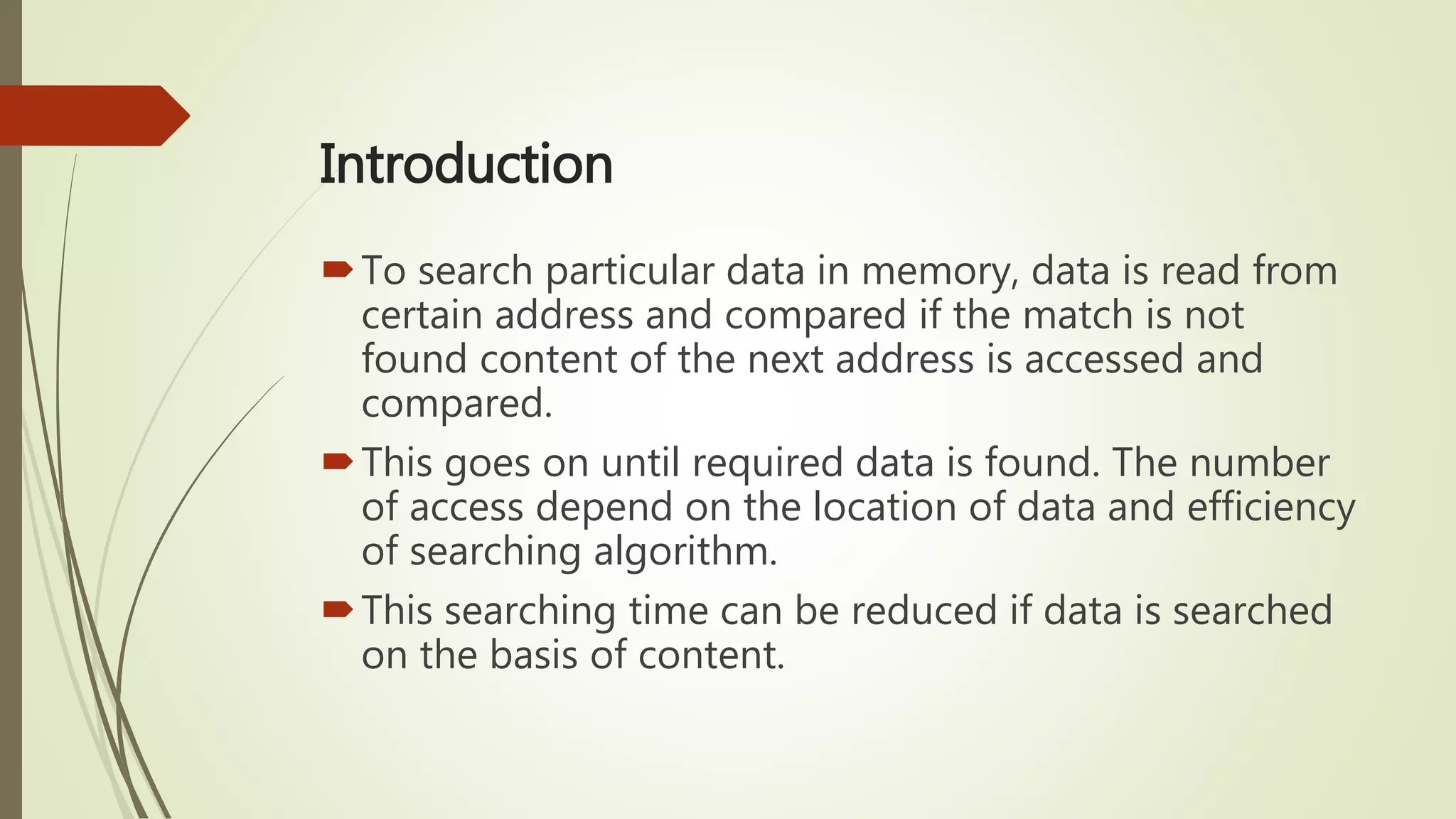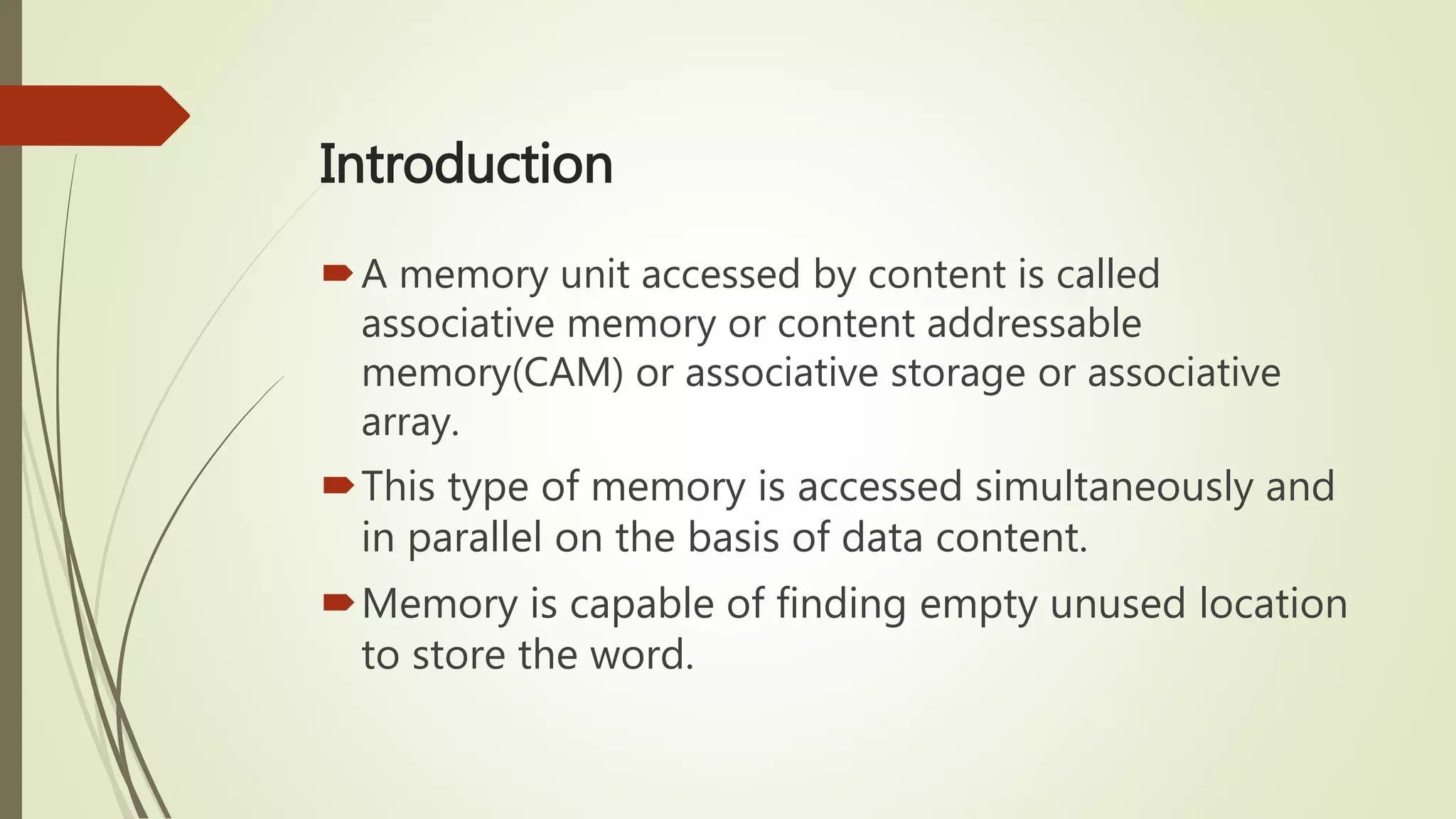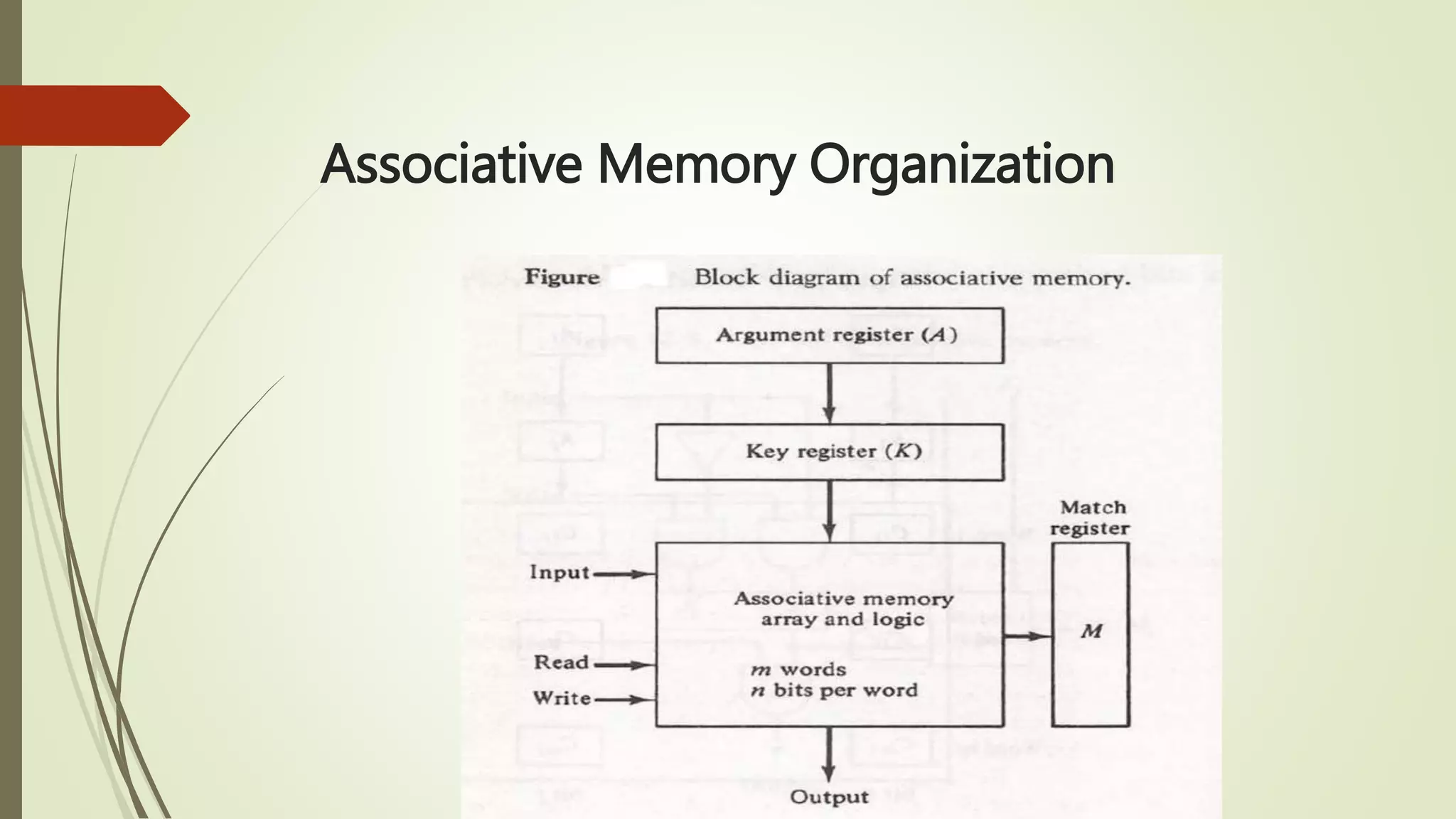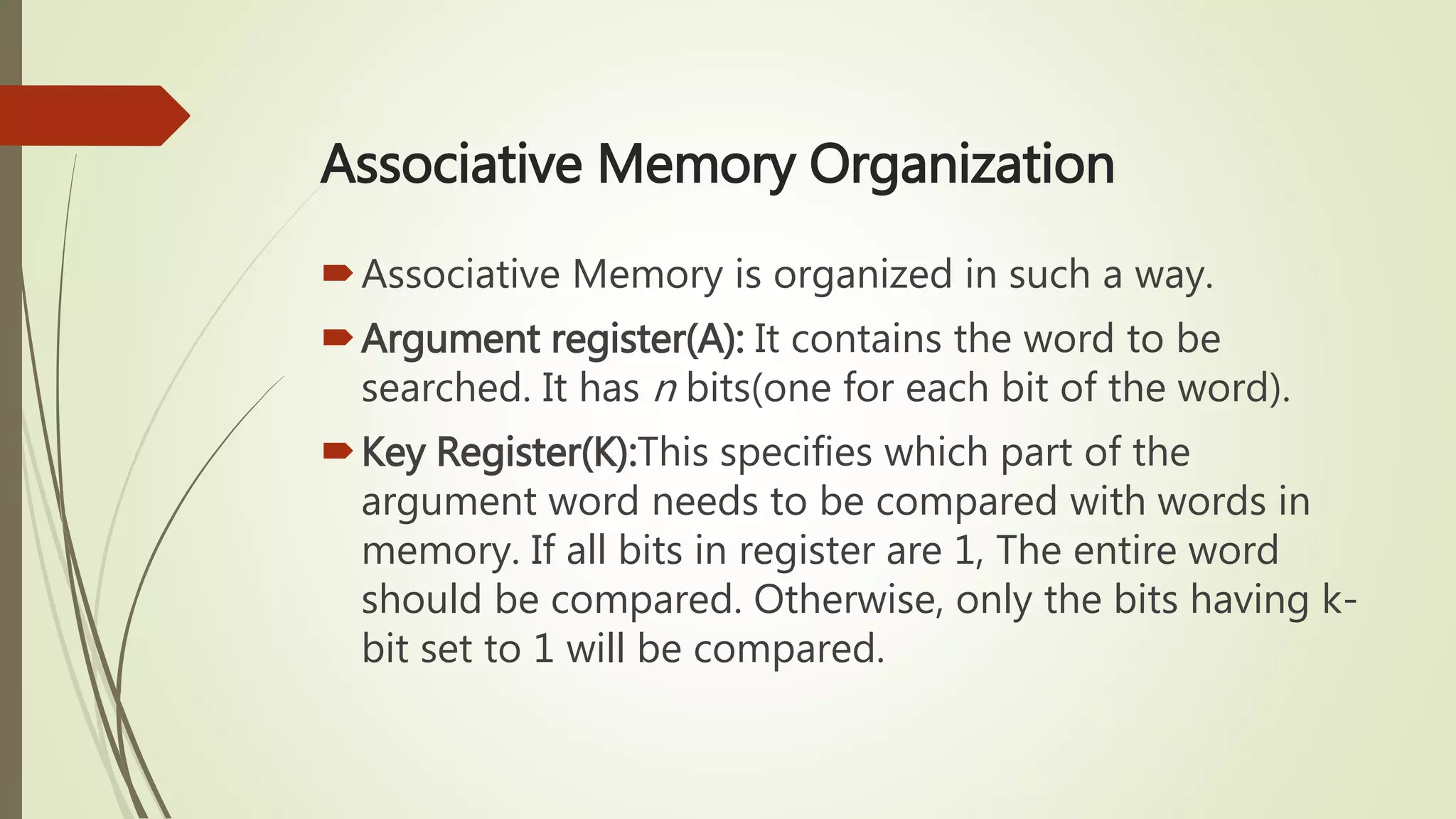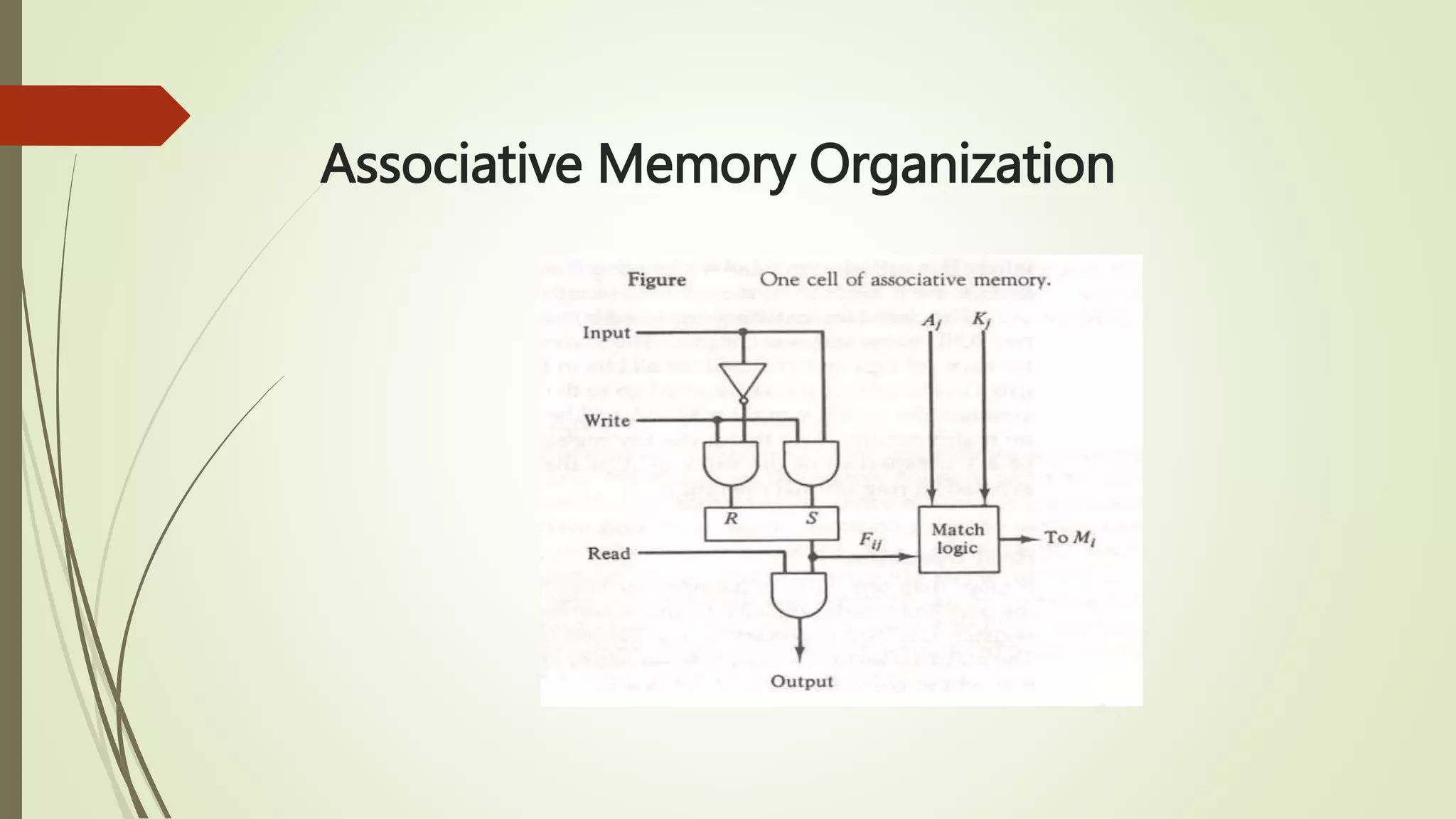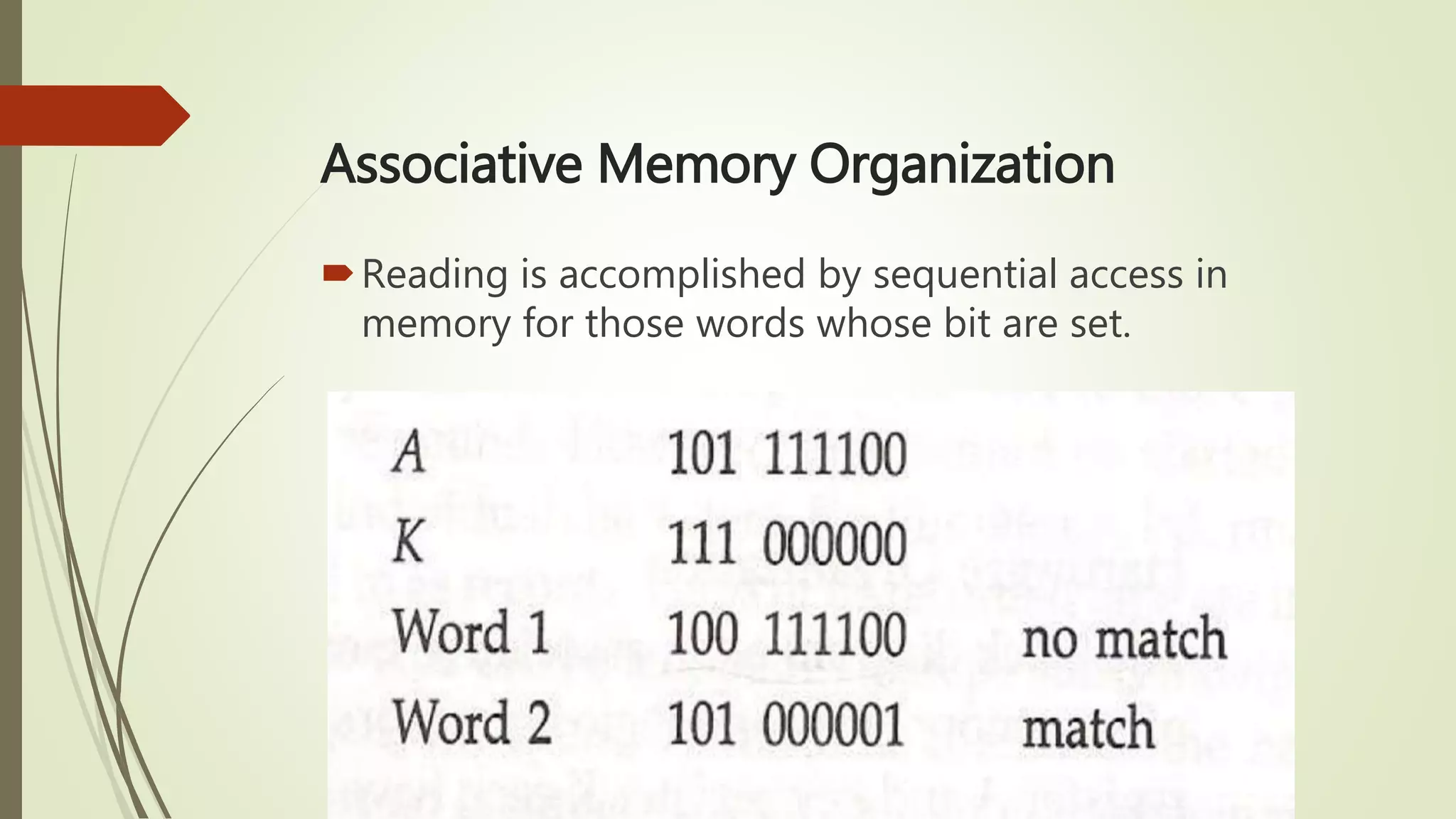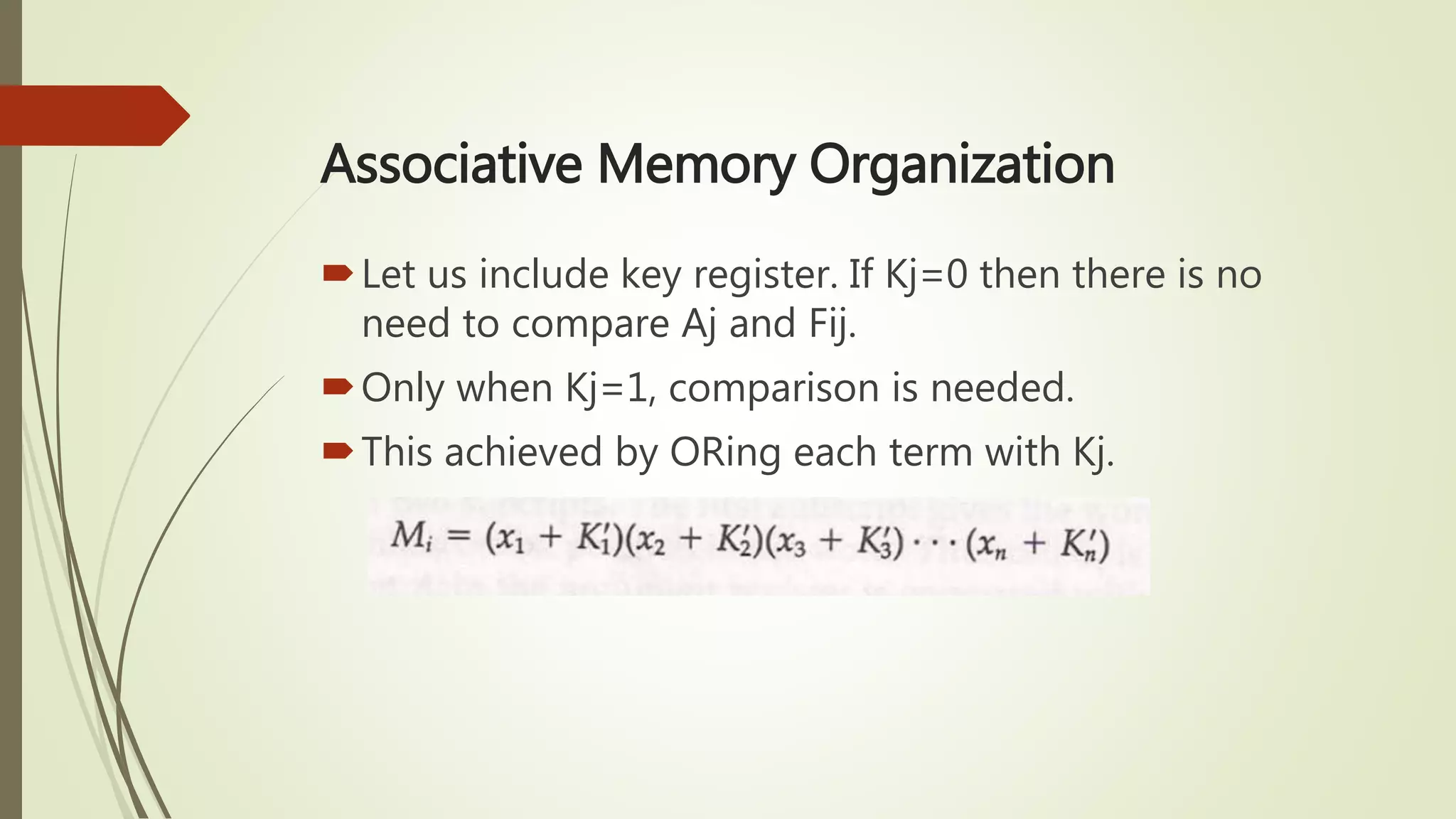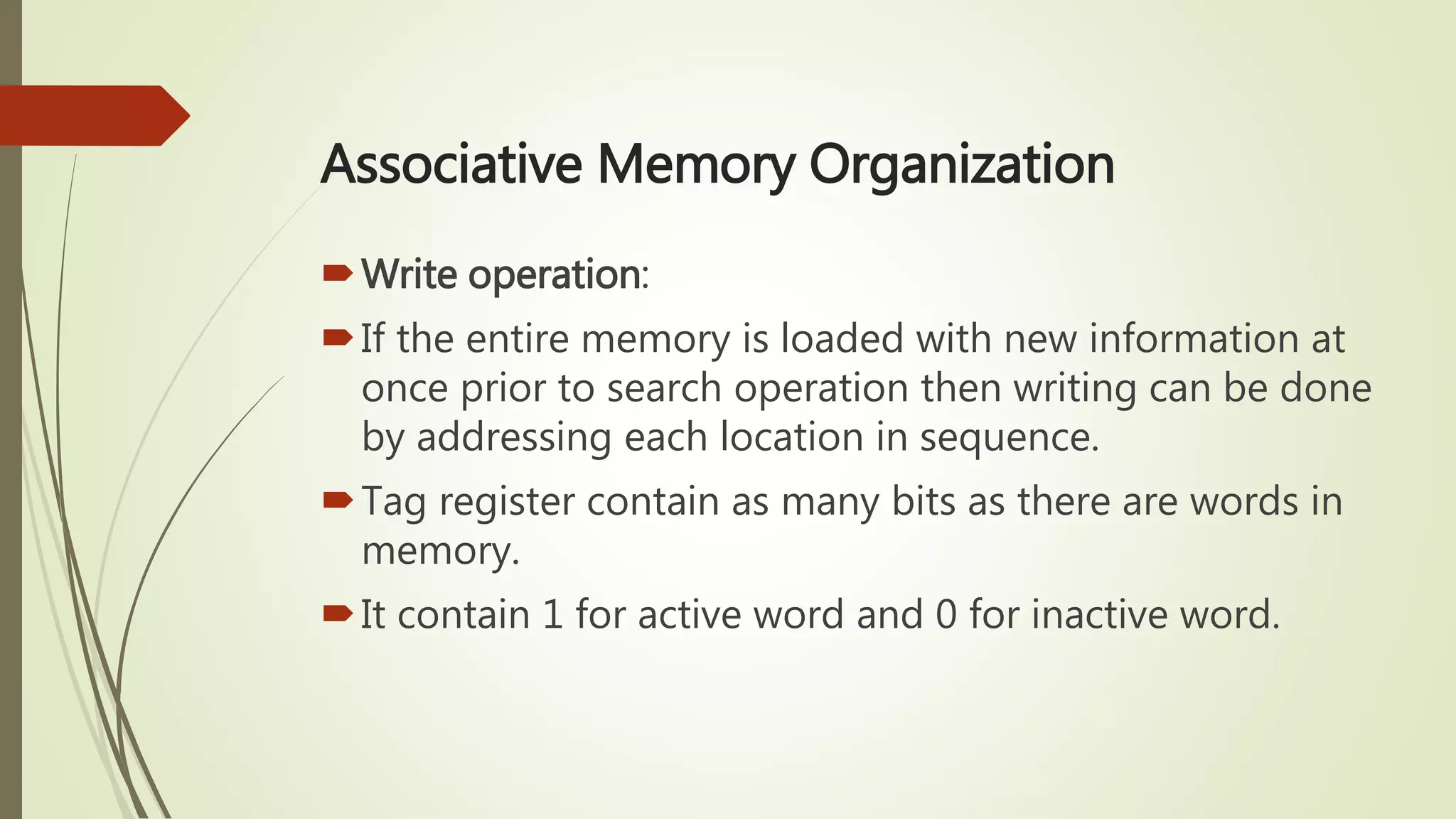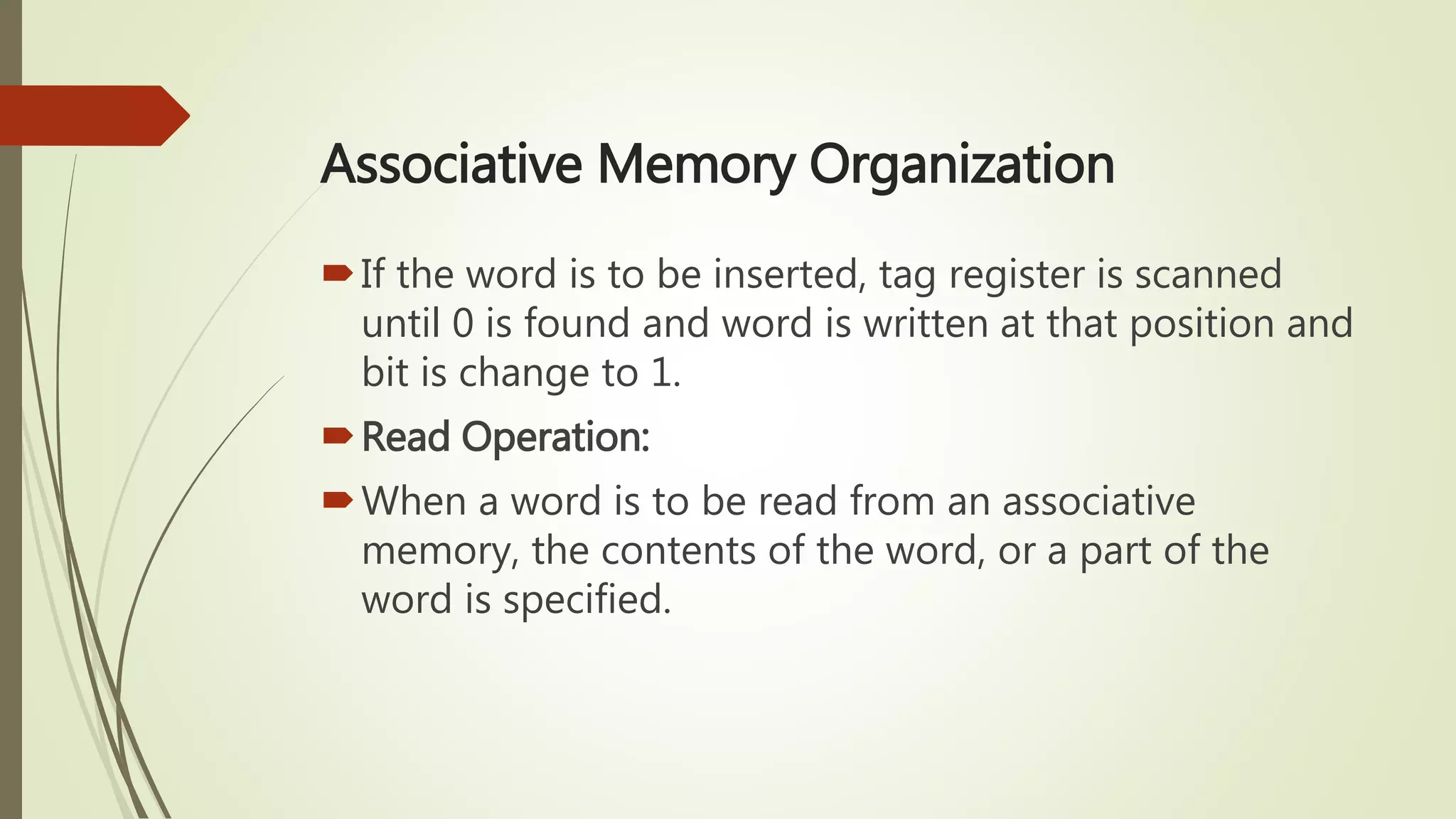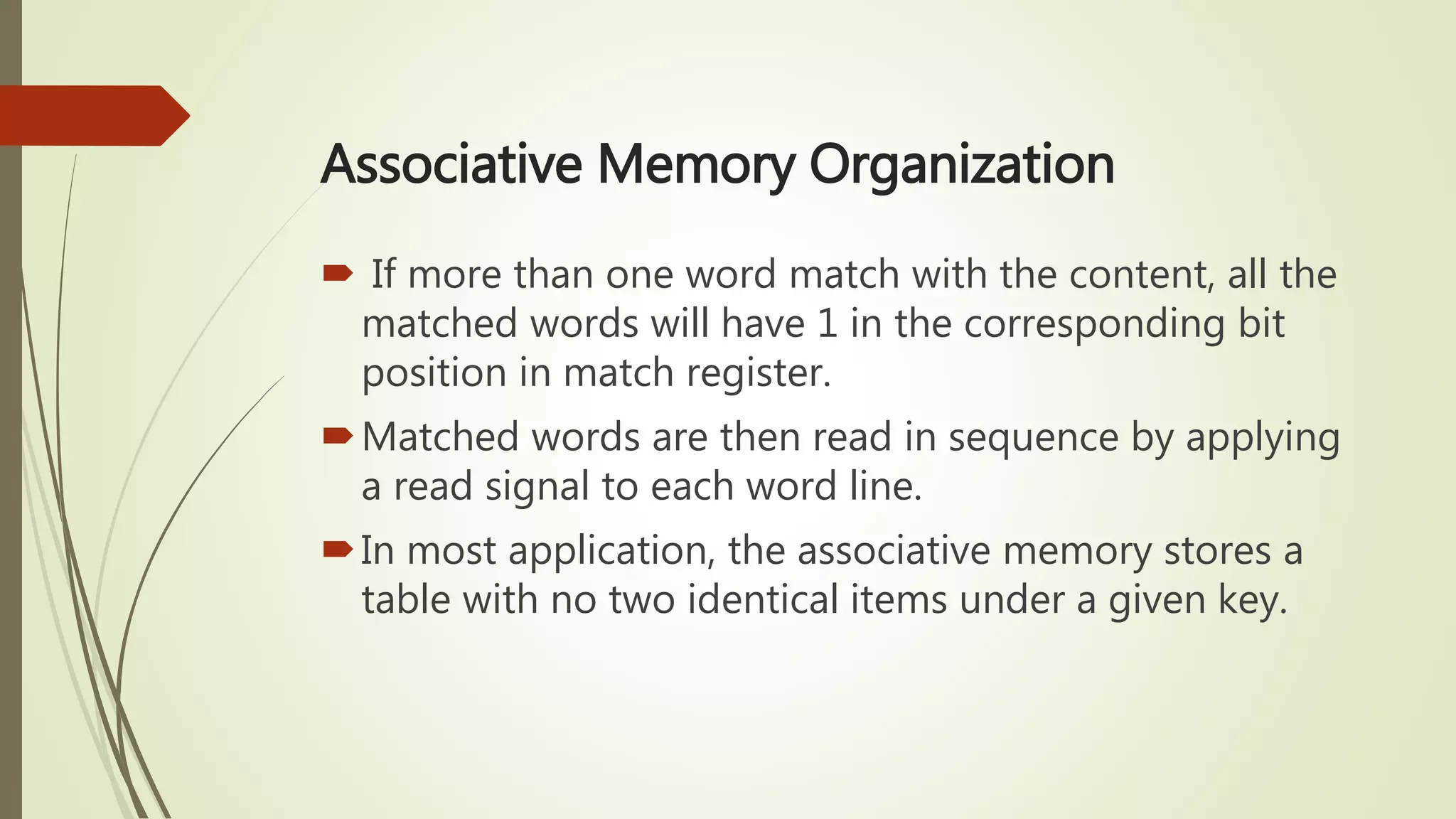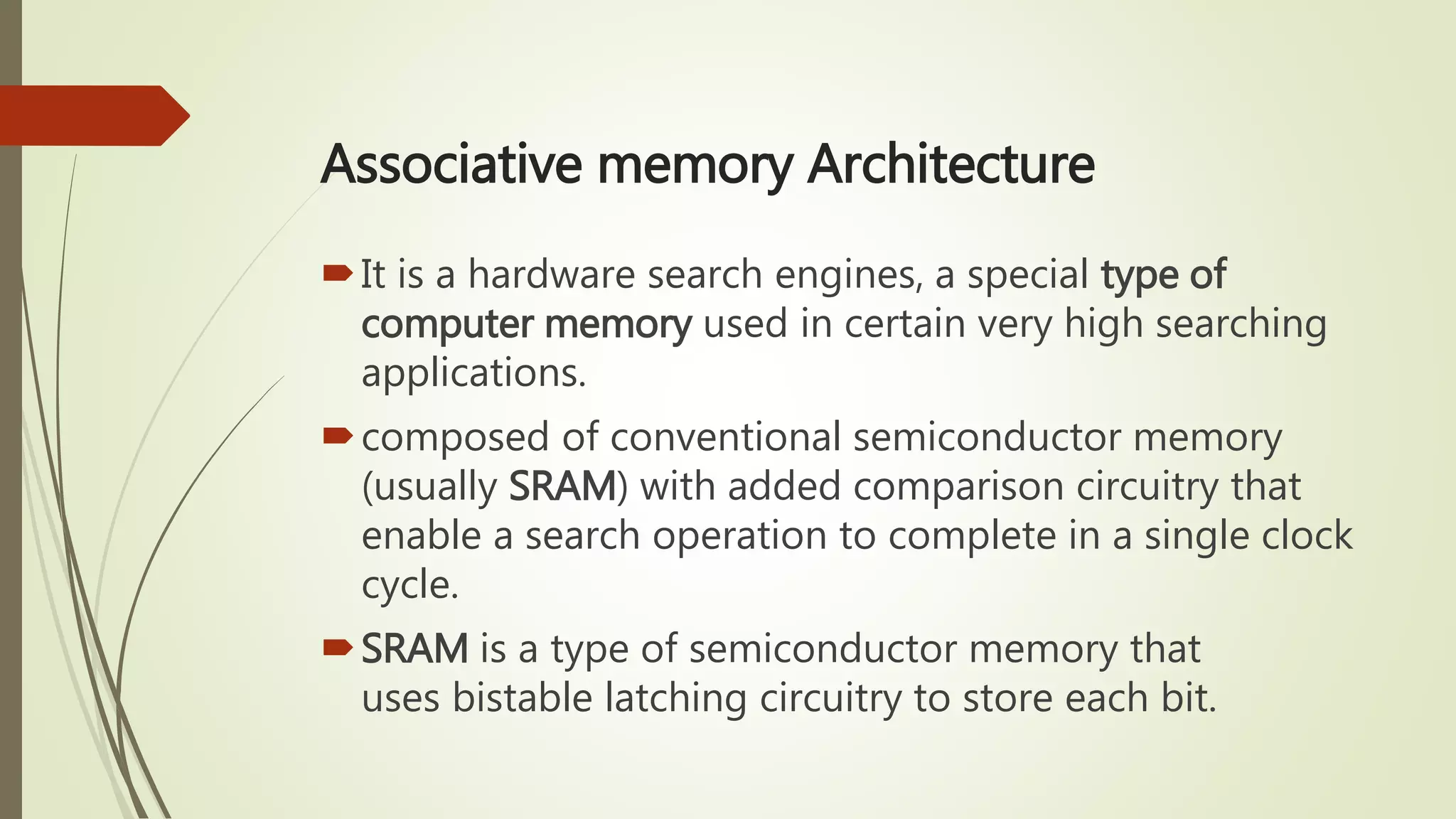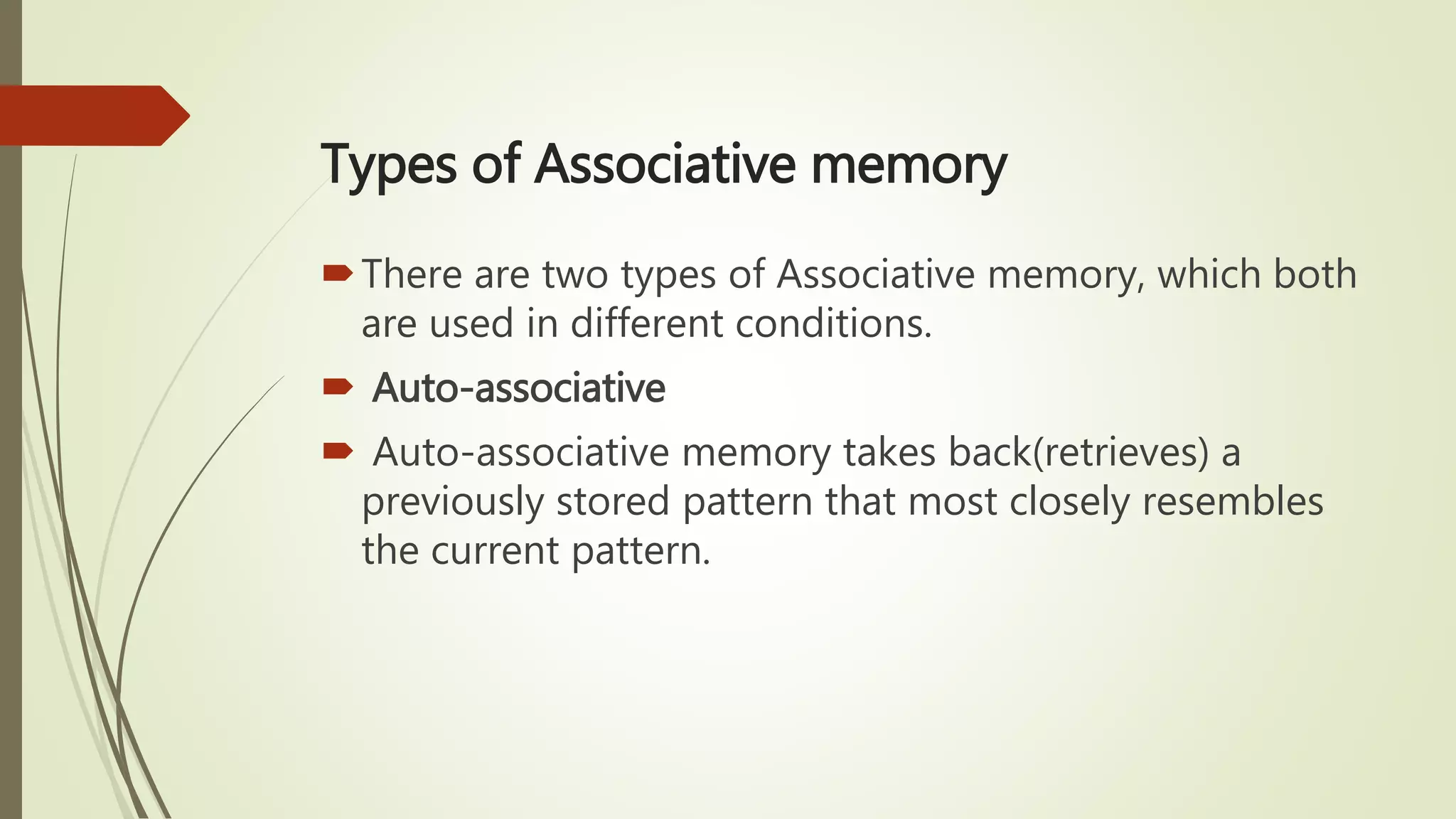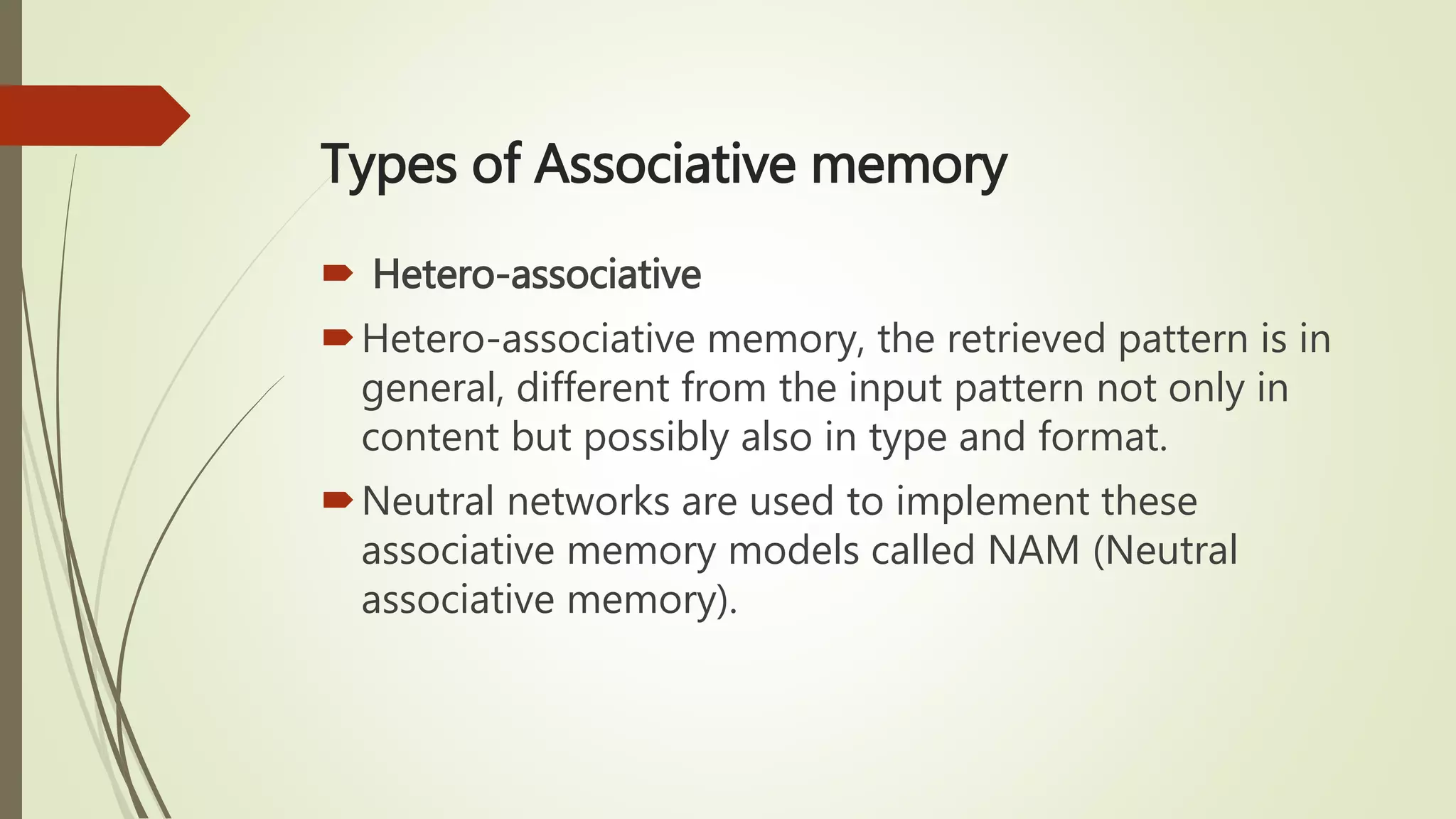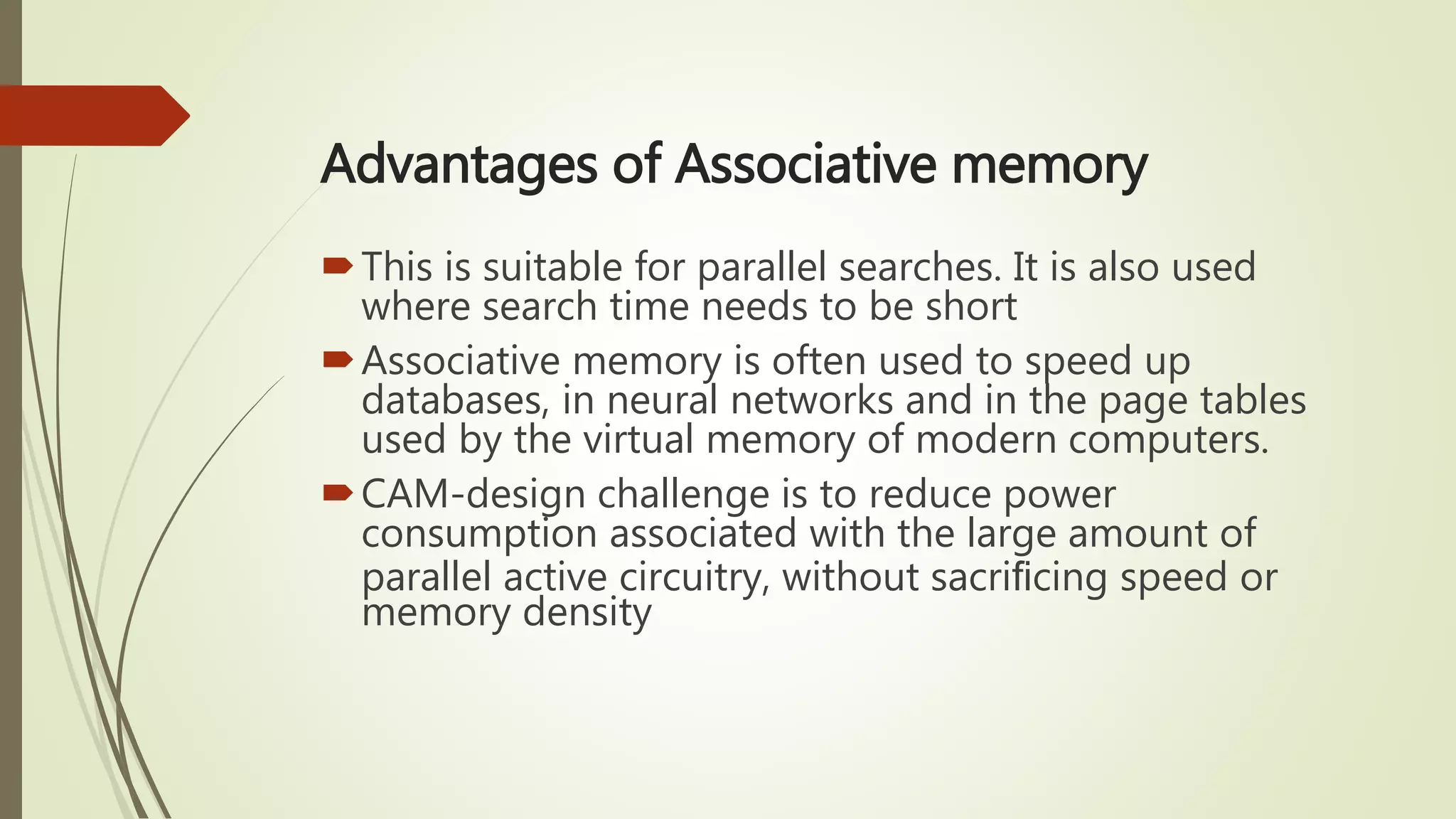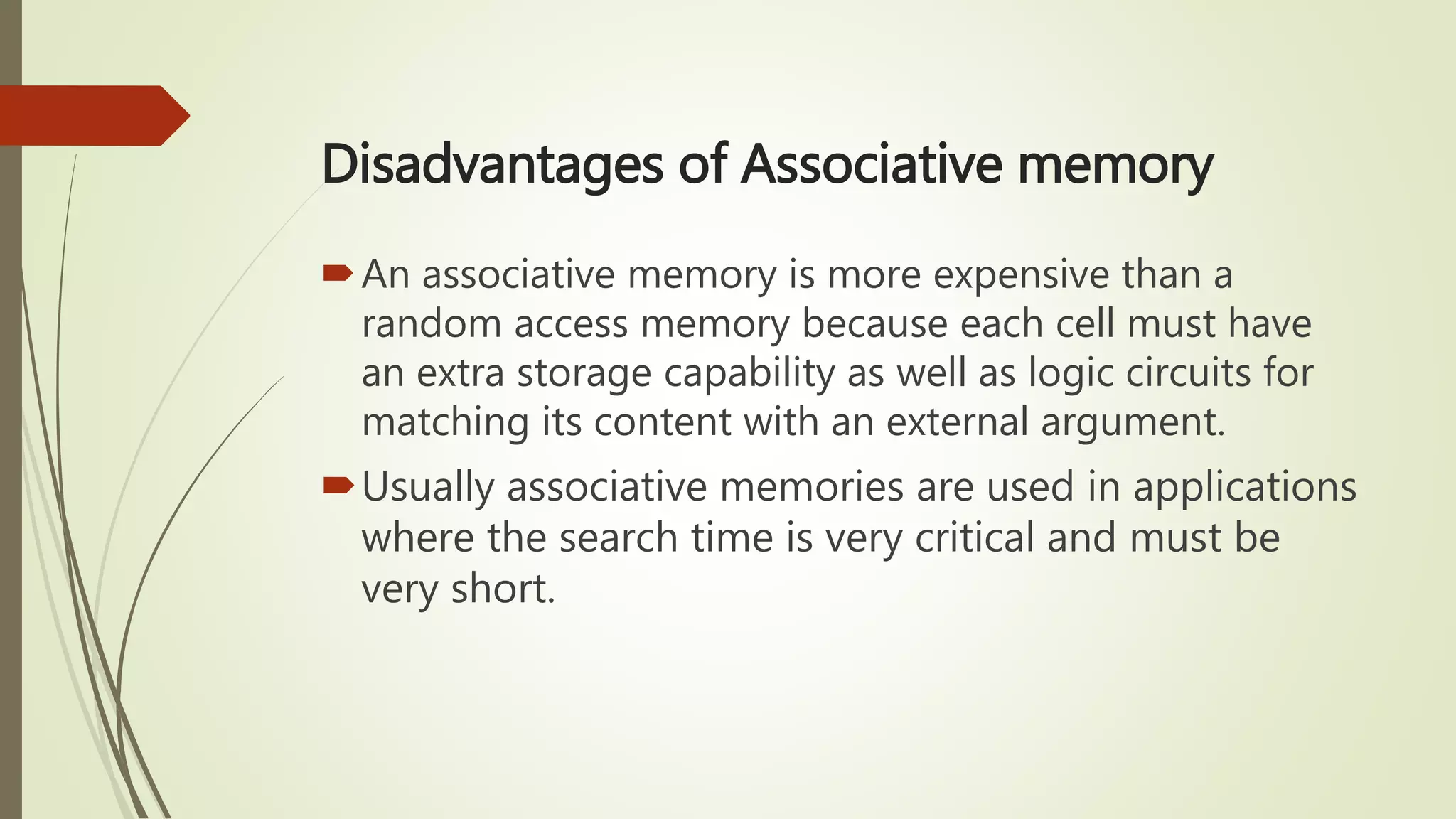Associative memory, also known as content-addressable memory (CAM), allows data to be searched based on its content rather than its location. It consists of a memory array, argument register (containing the search word), key register (specifying which bits to compare), and match register (indicating matching locations). All comparisons are done in parallel. Associative memory provides faster searching than conventional memory but is more expensive due to the additional comparison circuitry in each cell. It is well-suited for applications requiring very fast searching such as databases and virtual memory address translation.
